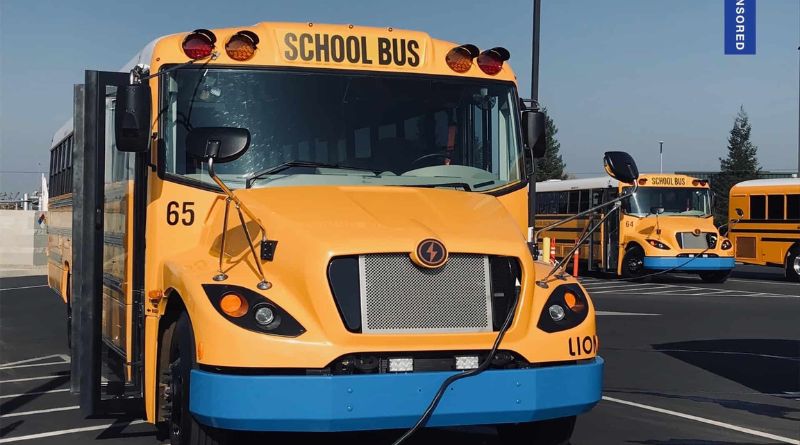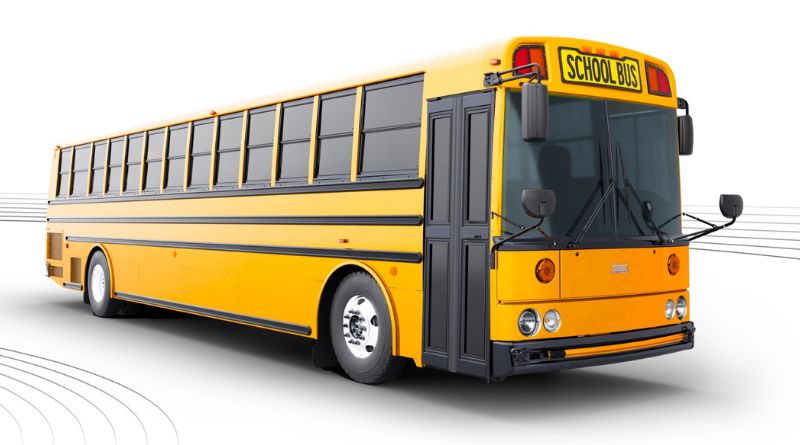As schools and communities move toward a more sustainable future, the electric school bus is becoming an essential part of the conversation. With the rise of climate change concerns, increasing fuel costs, and government incentives promoting clean energy, many school districts are now considering switching from traditional diesel buses to electric alternatives. But why should schools make this change? What benefits do electric school buses offer, and are they worth the investment? In this article, we’ll explore everything you need to know about electric school buses, including their advantages, challenges, and long-term impact on the environment and student health.
The Environmental Benefits of an Electric School Bus
One of the most compelling reasons to transition to electric school buses is their positive environmental impact. Unlike diesel-powered buses, electric models produce zero tailpipe emissions, reducing air pollution in school zones and surrounding communities.
Diesel school buses release harmful pollutants such as nitrogen oxides (NOx) and particulate matter (PM), which contribute to poor air quality, respiratory diseases, and climate change. By replacing a diesel fleet with electric alternatives, school districts can significantly cut their carbon footprint and contribute to cleaner air.
Additionally, many electric school buses are charged using renewable energy sources such as solar or wind power, further reducing greenhouse gas emissions. As more schools invest in clean energy solutions, the combination of electric transportation and renewable power sources can play a crucial role in combating global warming.
Health Benefits for Students and Drivers
Children are particularly vulnerable to air pollution due to their developing lungs and higher breathing rates compared to adults. Traditional diesel buses expose students to harmful exhaust fumes both inside the bus and at bus stops, leading to increased risks of asthma, bronchitis, and other respiratory illnesses.
Switching to electric school buses eliminates these toxic emissions, providing students with a cleaner and healthier ride to school. Studies have shown that reducing exposure to air pollution improves cognitive function, concentration, and overall well-being—factors that directly impact students’ academic performance.
Bus drivers also benefit from the cleaner environment inside an electric school bus. Unlike diesel buses, which produce loud engine noise and vibrations, electric models operate smoothly and quietly, reducing stress and fatigue for drivers. This not only enhances their work experience but also improves road safety.
Cost Savings and Financial Incentives
One of the most common concerns regarding electric school buses is their initial cost. While electric buses can be more expensive upfront than diesel alternatives, they offer significant savings in the long run.
Lower Operating Costs
Electric school buses require less maintenance since they have fewer moving parts compared to diesel engines. There’s no need for oil changes, exhaust system repairs, or complex transmission maintenance. Schools can save thousands of dollars per bus annually by cutting down on these maintenance expenses.
Moreover, electricity is generally cheaper and more stable in price than diesel fuel. Schools that invest in electric school buses can reduce fuel costs significantly, especially as electricity prices remain more predictable over time compared to fluctuating fuel prices.
Government Grants and Incentives
To encourage the transition to cleaner transportation, many governments and organizations offer funding programs for electric school buses. In the United States, for example, the Environmental Protection Agency (EPA) and state-level agencies provide grants and rebates to help schools offset the initial purchase cost.
Additionally, some utility companies offer incentives for installing electric vehicle (EV) charging stations, making it easier and more affordable for schools to set up the necessary infrastructure. With these financial incentives, the cost barrier to adopting electric school buses is gradually decreasing.
Battery Performance and Charging Infrastructure
One of the biggest questions surrounding electric school buses is their battery performance and charging requirements. Unlike diesel buses that can refuel quickly at gas stations, electric buses need adequate charging time and infrastructure to operate efficiently.
Battery Range and Efficiency
Modern electric school buses typically offer a range of 100 to 150 miles per charge, which is sufficient for most daily school routes. Some advanced models can go even farther with larger battery packs. Schools with longer routes may need to plan charging schedules carefully or consider hybrid options.
The efficiency of an electric school bus also depends on factors such as temperature, terrain, and driving behavior. Cold weather can slightly reduce battery performance, but many manufacturers are developing improved battery technologies to address this issue.
Charging Station Setup
Setting up charging infrastructure is a crucial step in transitioning to an electric fleet. Schools need to install charging stations either at their bus depots or strategic locations along routes. There are different types of chargers available:
- Level 2 Chargers: Slower charging but cost-effective, suitable for overnight charging at bus depots.
- DC Fast Chargers: Faster but more expensive, ideal for quick mid-day charging if needed.
With proper planning, schools can implement efficient charging solutions that minimize downtime and ensure that all buses are ready for operation each day.
Challenges and Considerations
While electric school buses offer numerous benefits, there are some challenges to consider before making the transition.
Initial Cost Barrier
As mentioned earlier, the upfront cost of an electric school bus is higher than a diesel bus. However, as battery technology advances and production scales up, prices are expected to decrease in the coming years.
Limited Charging Infrastructure
Some rural or underfunded school districts may struggle with setting up the necessary charging stations. This is where government grants and partnerships with utility companies can play a vital role in making the transition feasible.
Training and Workforce Readiness
Switching to electric school buses requires training for bus drivers and maintenance staff. Drivers need to adapt to the differences in vehicle handling, and maintenance crews must learn how to service electric motors and battery systems. However, with proper training programs, this transition can be smooth and beneficial in the long run.
The Future of Electric School Buses
The shift toward electric school buses is gaining momentum worldwide. Governments, environmental groups, and school districts recognize the long-term benefits of adopting clean transportation for students. As battery technology continues to improve, electric buses will become even more cost-effective, reliable, and accessible.
Many cities and school districts have already committed to fully transitioning their fleets to electric models within the next decade. As more funding becomes available and charging infrastructure expands, the barriers to adoption will continue to decrease.
Final Thoughts: Why Choose an Electric School Bus?
Choosing an electric school bus is not just about upgrading transportation—it’s about investing in a healthier, cleaner, and more sustainable future for students and communities. These buses provide significant environmental benefits, protect children from harmful emissions, reduce operating costs, and take advantage of government incentives to make the transition more affordable.
Although there are some challenges, the long-term advantages of electric school buses far outweigh the drawbacks. With proper planning and support, schools can successfully make the switch and lead the way in creating a greener world for future generations.
If your school district is considering upgrading its fleet, now is the perfect time to explore the benefits of electric school buses and take advantage of available resources to make this positive change a reality.








Leave a Reply